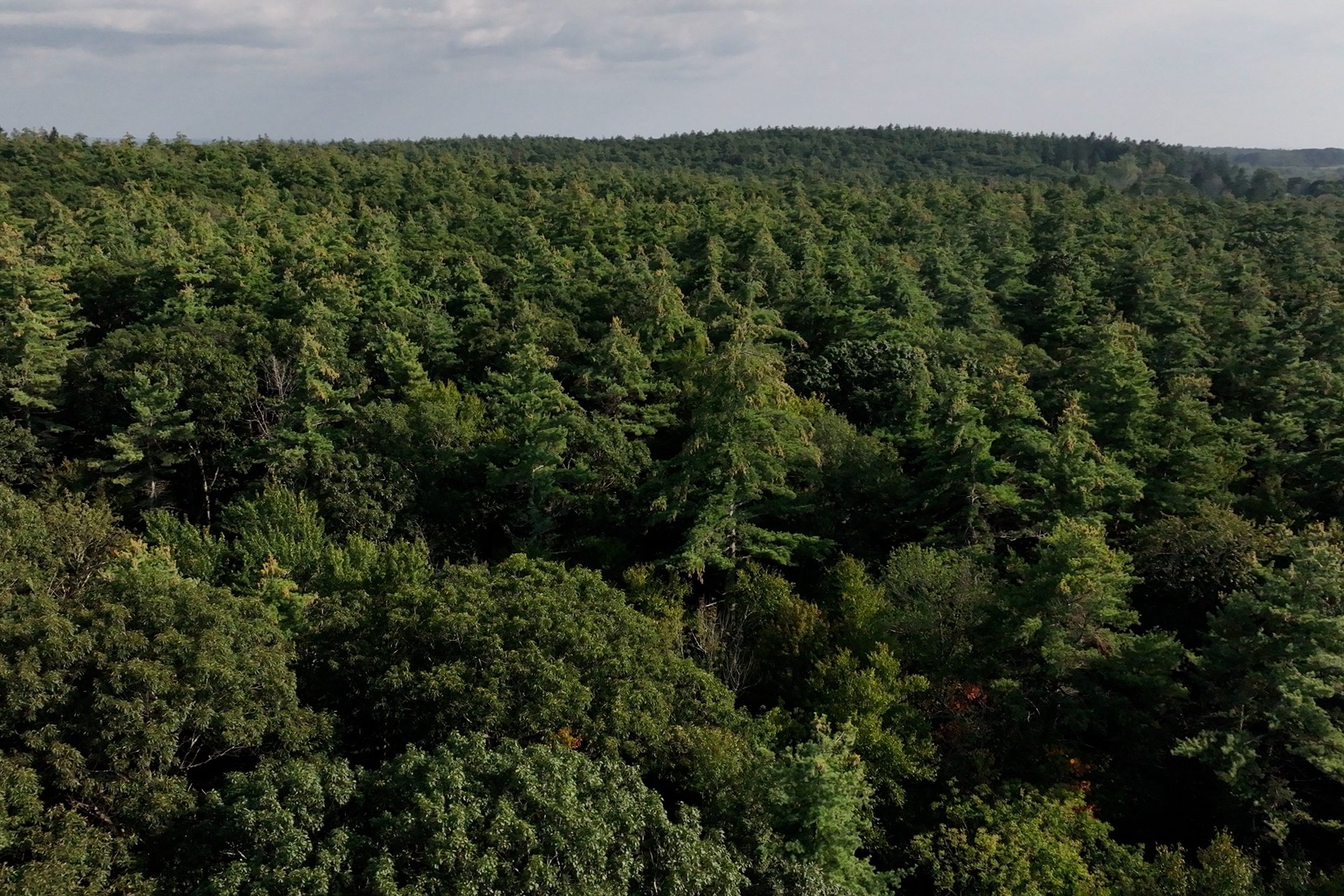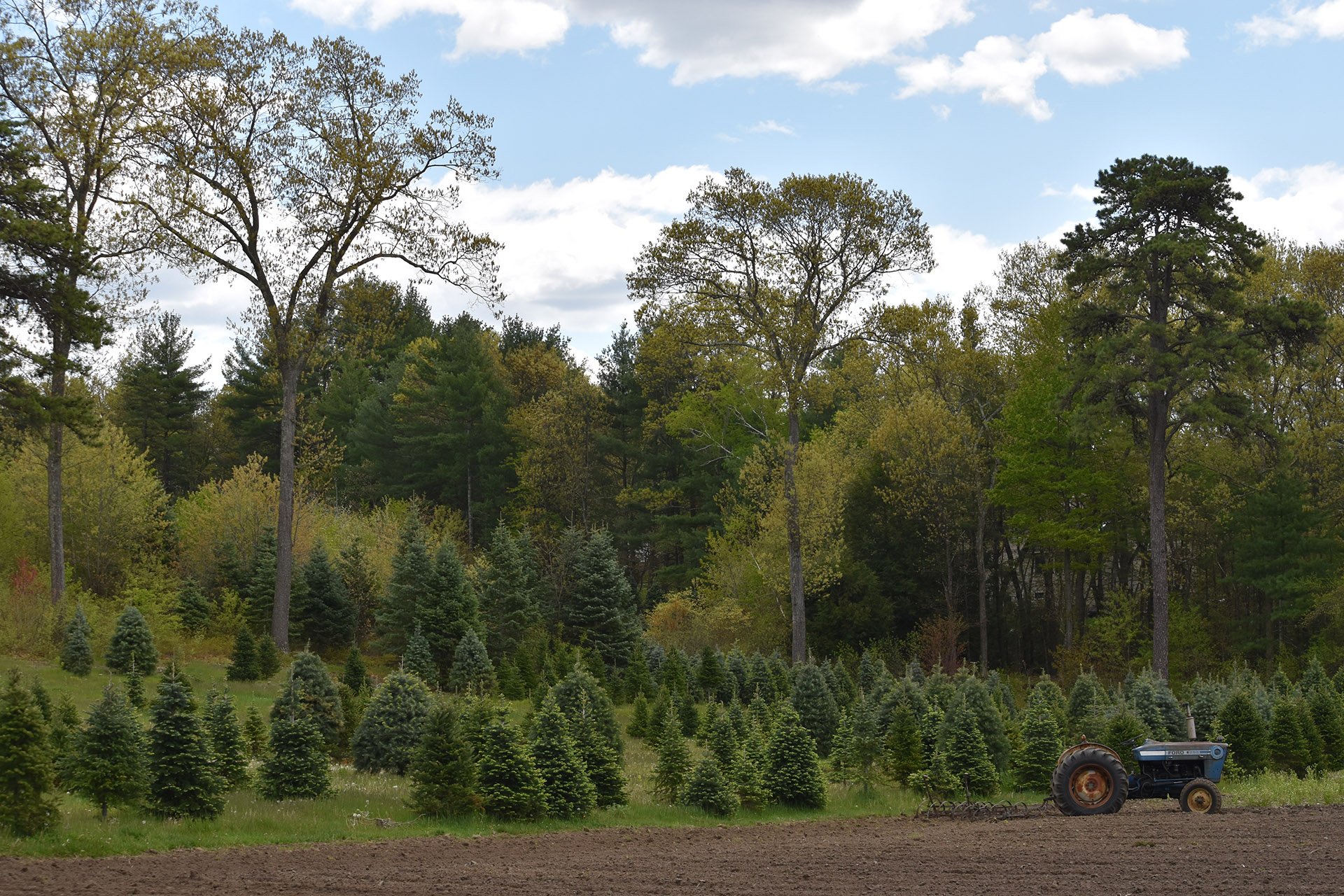In 2021, Mass Audubon set an audacious goal as part of the Action Agenda to work with partners to protect 10,000 acres of land in Massachusetts over the next five years.
Then, with a lot of help from those partners, we went out and accomplished it in four (and have no plans of slowing down).
Mass Audubon has helped to protect 10,992 acres of some of the most biodiverse and carbon rich lands in the Commonwealth during the past four years, with 71 percent of those acres in the last two years. For comparison, in previous years we averaged 600 acres annually, but last year it was more than 3,000 acres.
Some of this land we own outright, some we protect via permanent conservation restriction, and some we helped protect by contributing funds from Mass Audubon’s Catalyst Fund or technical expertise to our partners so they could buy and conserve the land.
Ultimately, our sights are set on the protection of 30 percent of Massachusetts by 2030. That’s an ambitious goal that requires that Mass Audubon—and all our conservation partners—find ways to accelerate our pace of land protected in the state.
This isn’t about Mass Audubon getting a land protection “win” or padding our sanctuary portfolio acreage statistics, it’s that the land is permanently protected. That’s why we’re increasingly supporting local and regional land trusts, in particular, to lift our whole community’s protection efforts. Regardless of the method, the outcome is an impressive example of what can be achieved with ingenuity, dogged perseverance, and true partnership.
Land Protection Matters Now More Than Ever
Founded 129 years ago, Mass Audubon has long been protecting the nature of Massachusetts. From our first property (Moose Hill in Sharon) in 1916 to our current goal of working to strategically conserve biodiverse and carbon-rich lands that are the most effective nature-based tools to mitigate the effects of climate change, we are devoted to preserving the outdoors and connecting people with nature.
We’re protecting land in perpetuity, creating wildlife corridors, ensuring buffers of drinking water sources, focusing on bringing the positive impacts of nature to historically under-served environmental justice communities, and improving habitat for wildlife.
This approach has resulted in Mass Audubon directly managing more than 43,000 acres of conserved lands that generate immensely valuable benefits to people and wildlife. Protecting these landscapes ensures wildlife has room to adapt and move in changing habitats, store massive amounts of carbon, and help cut down on heat islands in urban areas that lack adequate tree canopy.
A Few of Our Land Protection Success Stories
The counting started in 2021 with holding a CR on Bear Hole—a 1,400-acre tract of intact forest and diverse habitats in West Springfield—that is home to a large network of trails, houses a reservoir used for drinking water for more than a century, and is within five miles of three Gateway Cities (Springfield, Holyoke, and Westfield).
Then came a 20-acre parcel in densely populated Lowell that had been a multi-generational Christmas tree and vegetable farm. Mass Audubon purchased it as part of a $15 million joint initiative that included the City of Lowell, Lowell Parks & Conservation Trust, and Mill City Grows. The recently opened Pawtucket Farm Wildlife Sanctuary honors the property’s agrarian history by providing community growing spaces, a soon-to-open All Persons Trail, and a nature center.
And in the central part of the state, we helped the towns of Winchendon and Ashburnham protect more than 1,350 forested acres from a utility-scale solar development that would have clear-cut 350 acres. Thanks to the $75 million 30x30 Catalyst Fund that Mass Audubon launched, seeded by a generous donation from MathWorks, we had the funds available to help both towns take advantage of a right of first refusal on the land, and eventually transfer it to the state so it is protected forever. The towns did not have access to the funds required within the short time window, but with that money on hand and the help of Mount Grace Land Conservation Trust coordinating grassroots community outreach on the ground, our collective efforts resulted in saving these forested acres.
The Winchendon Forest project is just one example of how the 30x30 Catalyst Fund has enabled Mass Audubon to rapidly increase the pace of land protection. The Catalyst Fund not only enables Mass Audubon to be nimble and secure properties that are at a high risk of development, but it also helps us support our conservation partners through technical and financial support. The support of the 30x30 Catalyst Fund has resulted in the protection of more than 6,300 acres of the 10,992-acre total.
Not Resting on Our Laurels
While protecting nearly 11,000 acres in less than five years is something to celebrate, we still have a tremendous way to go to meet the state’s goal of protecting 30 percent of land by 2030.
Not only are we facing the loss of wildlife habitat, inequitable access to nature, and climate change, we’re doing it amid political turbulence that is deemphasizing federal focus on environmental work as well as clawing back grants and other funding.
The Catalyst Fund will help, but what is really needed is a dedicated source of funding at the state level.
Mass Audubon is spearheading the Nature for Massachusetts Coalition, made up of dozens of environmental groups, whose goal is to create a permanent fund for land protection, restoration, and climate resiliency by setting aside a portion of the revenue generated from the existing sporting goods sales tax. If this fund gets created, as much as $100 million every year would go to protect nature in the Commonwealth without increasing taxes one cent.
You Can Help—Here's How
We’re still fundraising for an additional $35 million in Catalyst Funds to help the state meet its 30x30 goals. Make a gift to help us reach that goal.
In addition, the Nature for MA coalition is supporting an effort to bring the issue to the 2026 statewide ballot, but it takes a lot of work. The coalition needs to collect the signatures of over 75,000 registered voters from across Massachusetts to get there. If you’re interested in learning more or in volunteering to support the effort, explore how you can support this ambitious effort.
Stay Connected
Don't miss a beat on all the ways you can get outdoors, celebrate nature, and get involved.




